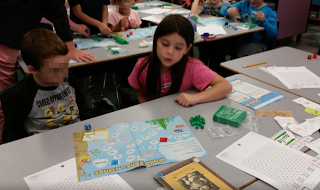Our Goal Should Not Be to Teach Kids How to Identify Fake News

Teaching our children and students how to recognize fake news is a good first step, but it should not be our goal. I wrote about the spread of fake news recently and shared a variety of research, data, and resources for teachers to help students develop media literacy skills. But I think that I – and many of my peers who have written and shared with urgency about fake news – stopped short of what is really needed. We need to go farther. We need to teach our children what to DO once they have determined an article or image is fake news. Here's why we need to take this next step, and how we can do it together. Why? At it's worst, fake news has caused violence – as in the case of the man firing a rifle in a pizza shop after reading a fake online article that the restaurant was " harboring child sex slaves " inside. Sadly, the man in this situation is not the only adult who has fallen for fake news. Pew's recent research indicates that nearly a quarter of
